In the post-vocabulary list era, we know that vocabulary presented repeatedly in context is the higher road. In that light, what are some practices teachers have found to help learners acquire rich vocabulary without developing, assigning, and drilling long lists of words? I’ll present here one of mine.
But first…
Let me give a bit of background on this issue, mostly from my dear friend Amy Lenord, who has written about this better and more extensively than I have. Amy first invited us to let go of the list in late 2013. Then, she summarized the #langchat community’s reactions to the question “List or no list?” She told us what we might do instead of a vocab list, and then she guided us through why and how to let students self-select vocabulary She offered ideas like the vocabulary scramble.
Now a bit of history from yours truly: I’m not an all-or-nothing type of teacher and I’ve long held that this very beneficial move does not mean that “no vocab list” is a hill to die on.

If you want to look at some really old Sra. Musicuentos material, you can check out an example of the vocab list from my 2009 Spanish 1 class, and let me tell you my AP Spanish vocab lists were epically long (though there were only six of them for the year, corresponding to my six units). A couple of years later I started arguing that the real issue was how we were assessing vocabulary and I began to blog and present on how to kick the vocab quiz (I haven’t given one in almost ten years).

But before I get too sanctimonious or high on that pedestal, you can take a minute to look at some really old Miss Musicuentos material and check out this actual Spanish 3 test I was super proud of long about 2004. And in case you didn’t take time to click, let me screen shot some of this classic beauty for you.

Oh, there’s more.
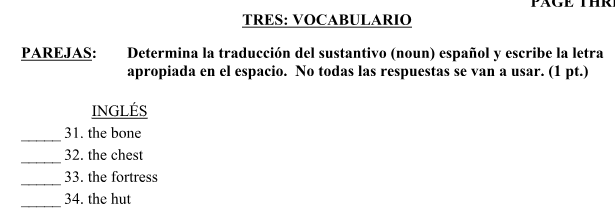
Wait for it…

Yes, I really did write that.
Returning to actual progress in my journey, I came to understand that we cannot control vocabulary, but we can provide enriching experiences by creating the right classroom habits. Speaking of those habits, some of ours are visualizing vocabulary and using translation-free (shower curtain) word walls.
Enough memory lane. What am I suggesting we try this school year?
A permanent vocab brainstorming station
This idea came to me in the spirit of letting students self-select vocabulary instead of receiving a list. For those of you who have your own teaching space (I’m jealous!), how about setting up a vocab brainstorming station that learners can go to every time you begin a new topic, unit, novel, etc.? Here are the supplies that made my vocab brainstorming station a fairly simple success.
1. Dry-erase tape with question or sentence starter
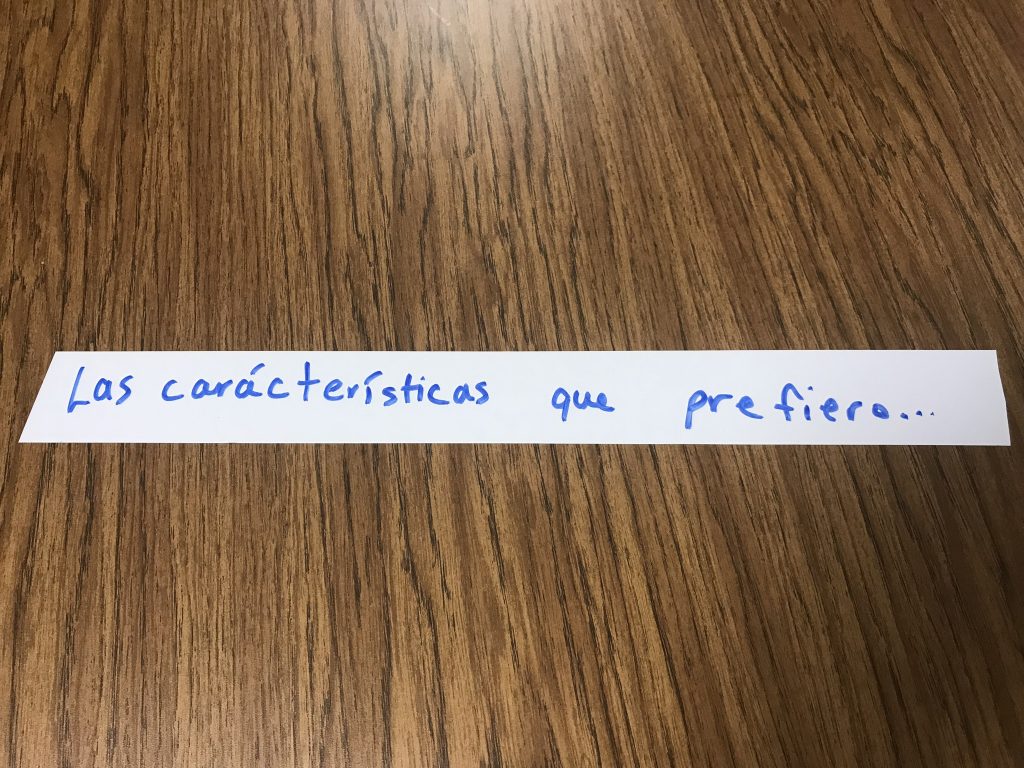
I blogged about dry-erase tape a couple of years ago and it’s still one of my favorite classroom supplies ever invented. I love it so much I give it away at conference sessions in case someone else loves it like I do.
At a vocab brainstorming station, you can leave the dry-erase tape on the wall, table, or desk, and change the question or sentence starter (in the TL) you want learners to focus on for finding the vocabulary they’ll need. Here are some ideas:
- The characteristics I prefer in (a hotel, restaurant, tourist site) are…
- How do you take care of a pet?
- What happens in a war story?
- I would describe a national park as…
- The top reasons people use social media are…
- The things you most often hear in a theme park are…
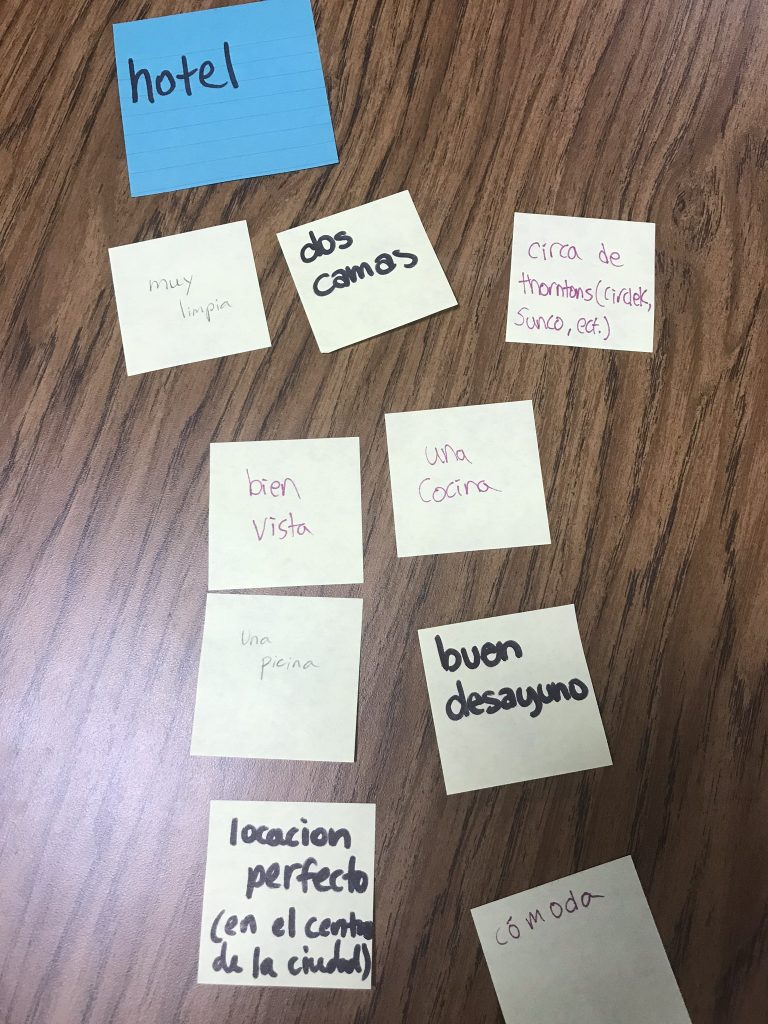
2. Device connected to WordReference
Next, make sure learners have a reference available. If you’re low on tech, a good dictionary might do, but in this day of changing technology and language, WordReference is my top pick (the forums!). This way, the students can look up the words and phrases they think they’ll need – and if they’re working together in a good group of mixed proficiency (and ahem, dedication), there’s a better chance they won’t end up putting down sustantivo (“noun”) instead of the word for “roller coaster.”
3. Mini sticky notes
Now they need something to write on. My favorite is mini sticky notes (I also ask for these for Christmas), because they can move them around and categorize them as phrases, questions, nouns, descriptors, connectors, positive words, negative words. You could even ask them to color code them: yellow for objects, blue for descriptions, pink for actions. Then, those same sticky notes can become part of communicative tasks and activities later.
To recap, and see how the whole thing looked together in my class:
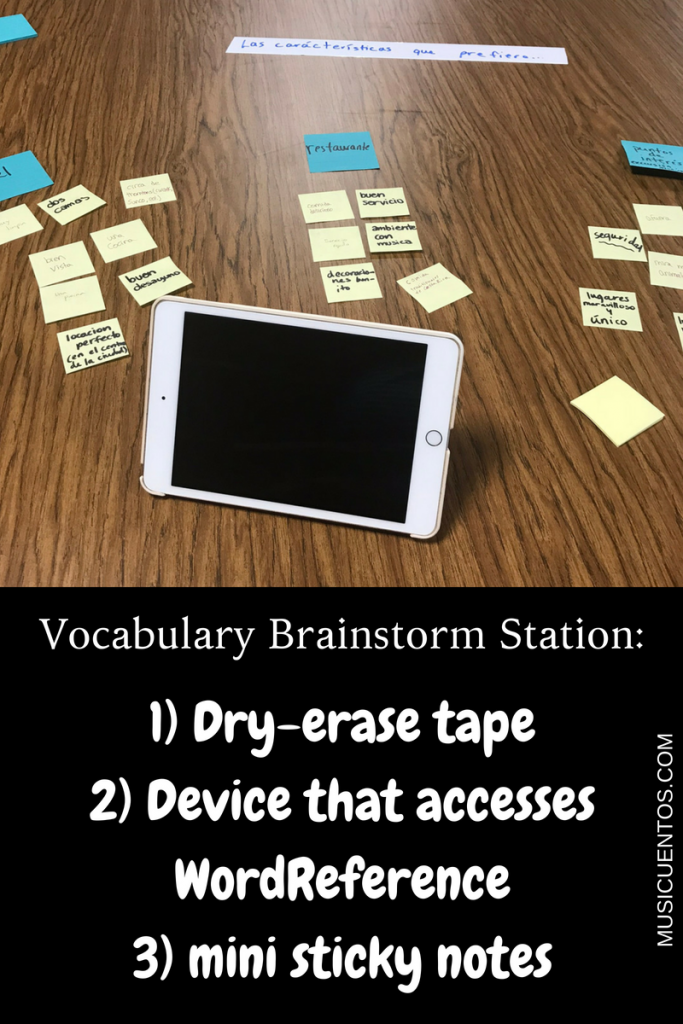
What do you think – is a vocab brainstorming station worth a try this year?
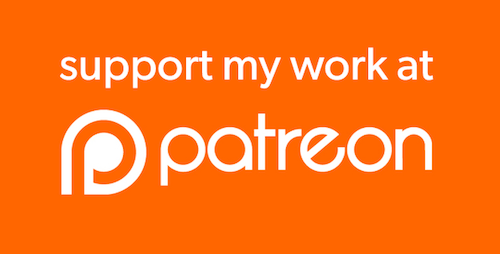 If Musicuentos has significantly helped you in your language teaching journey, consider becoming part of the “thanks” crew on Patreon. “La lotería” patrons receive every resource I produce, whether it’s a $2 activity or a $50 ebook guide, as thanks for their sponsorship.
If Musicuentos has significantly helped you in your language teaching journey, consider becoming part of the “thanks” crew on Patreon. “La lotería” patrons receive every resource I produce, whether it’s a $2 activity or a $50 ebook guide, as thanks for their sponsorship.
1 Comments
Comments are closed.




[…] fifth most-read post of 2018 on Musicuentos was about setting up a permanent vocabulary brainstorming station. I wish mine could be permanent! Whether you’re beginning a new unit or just priming for […]